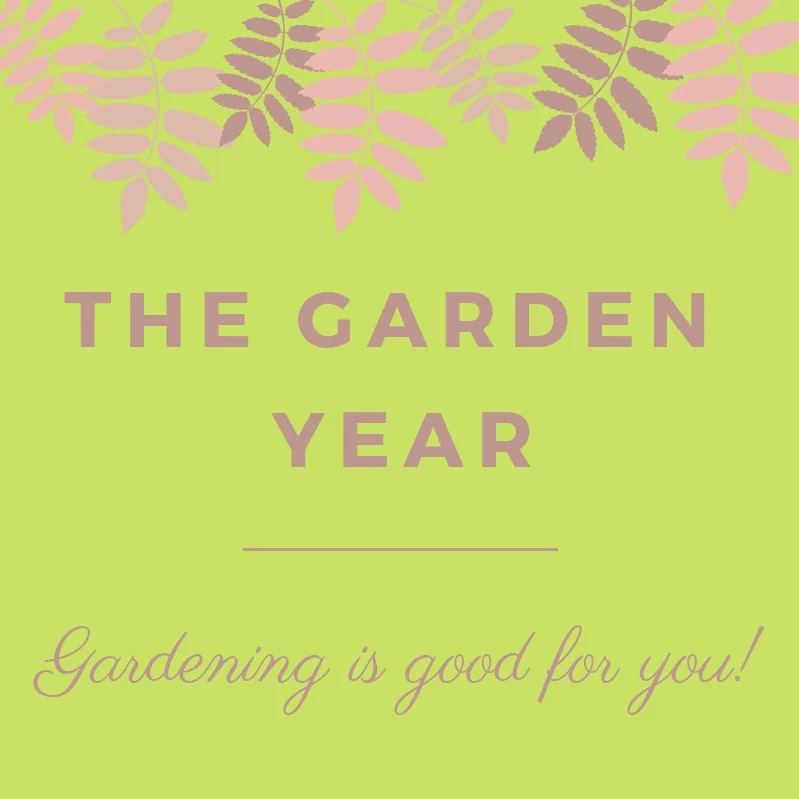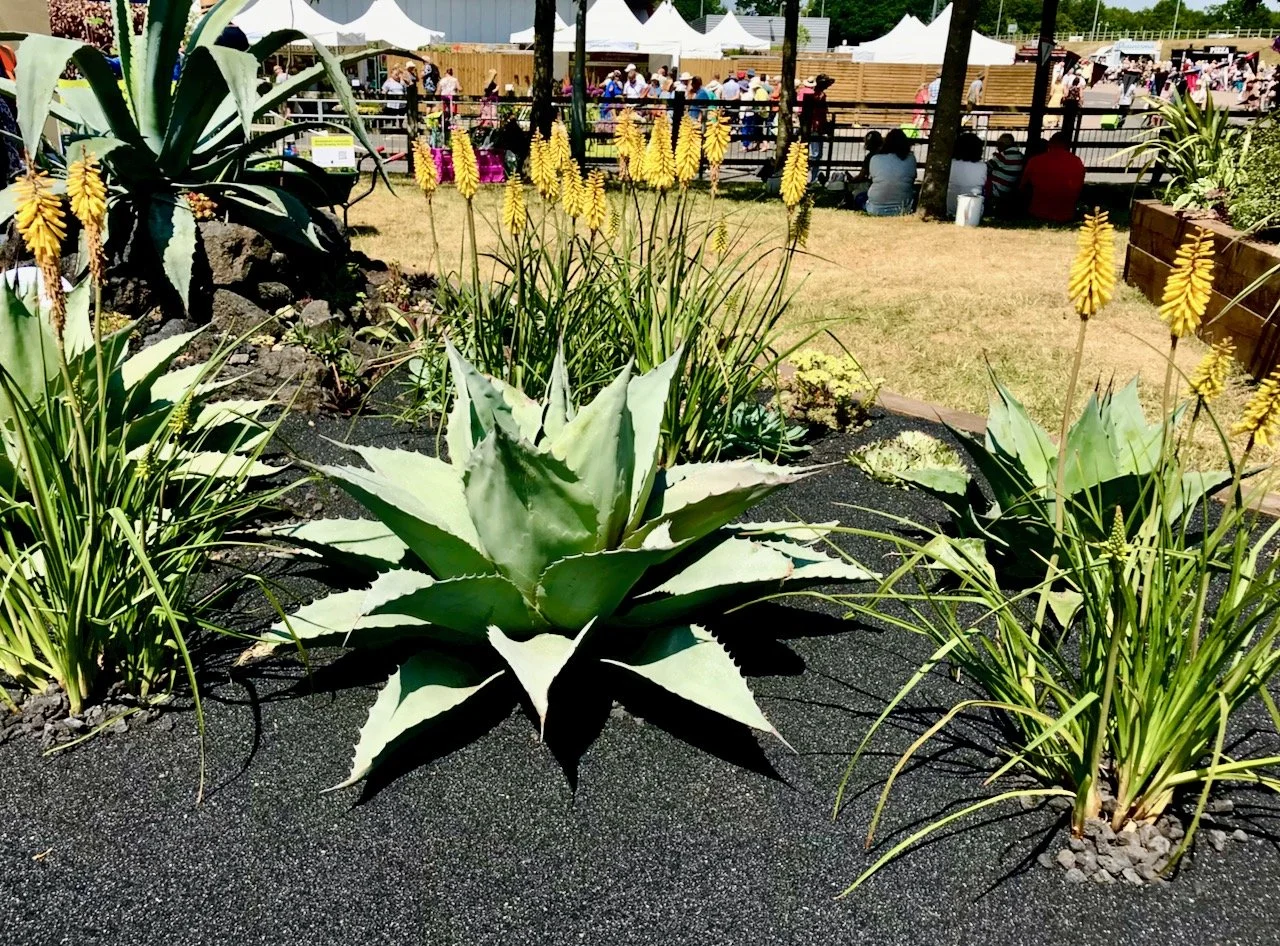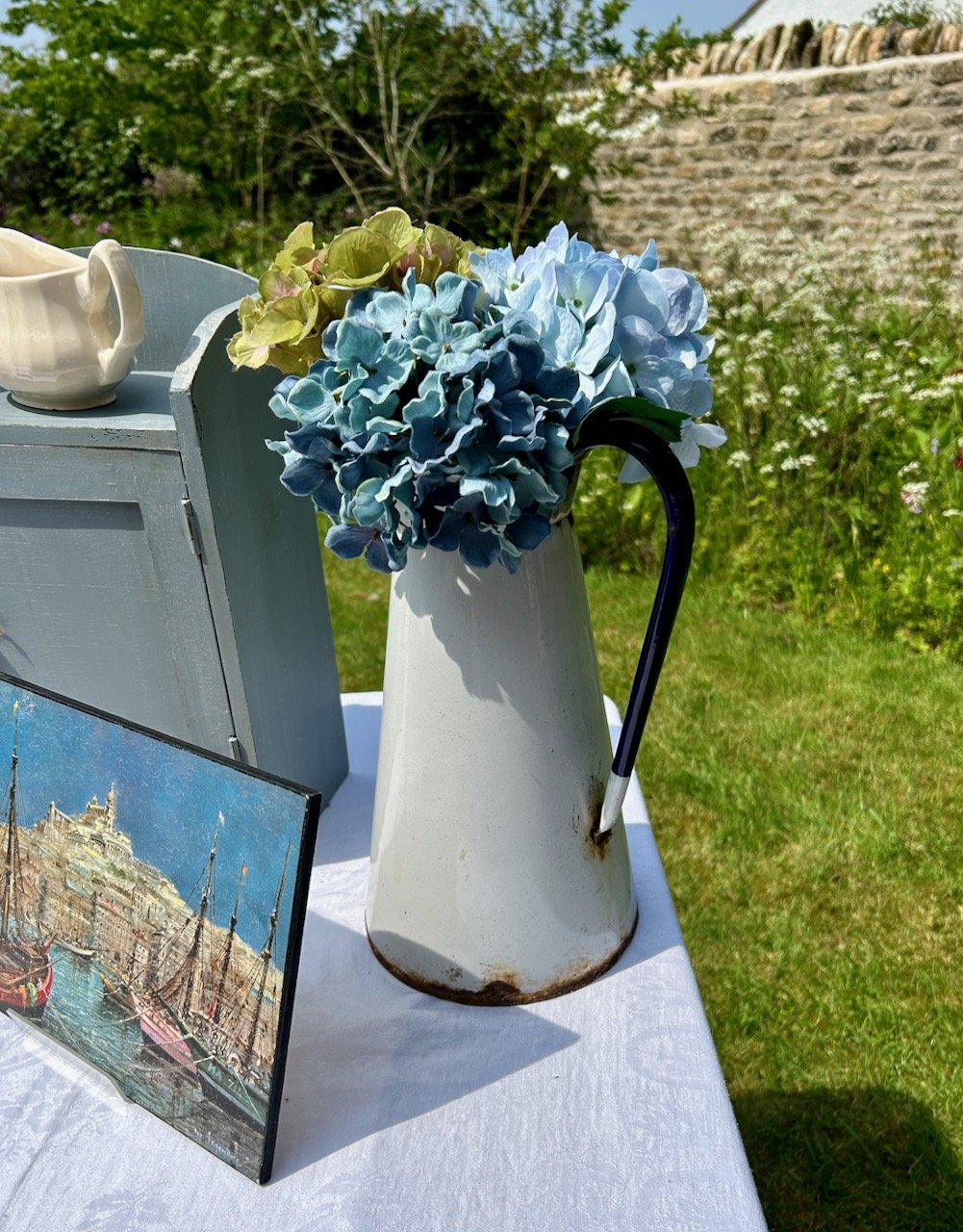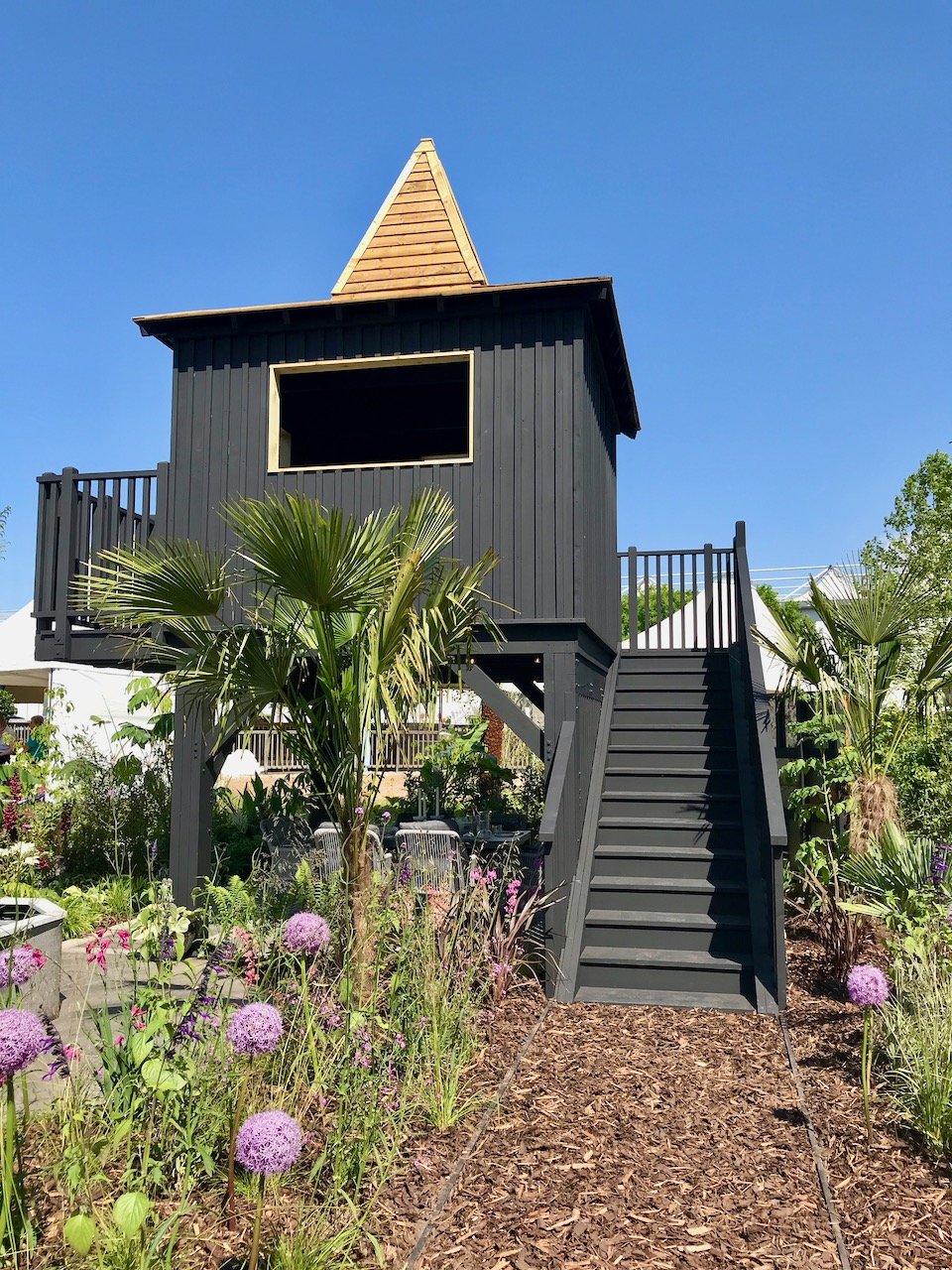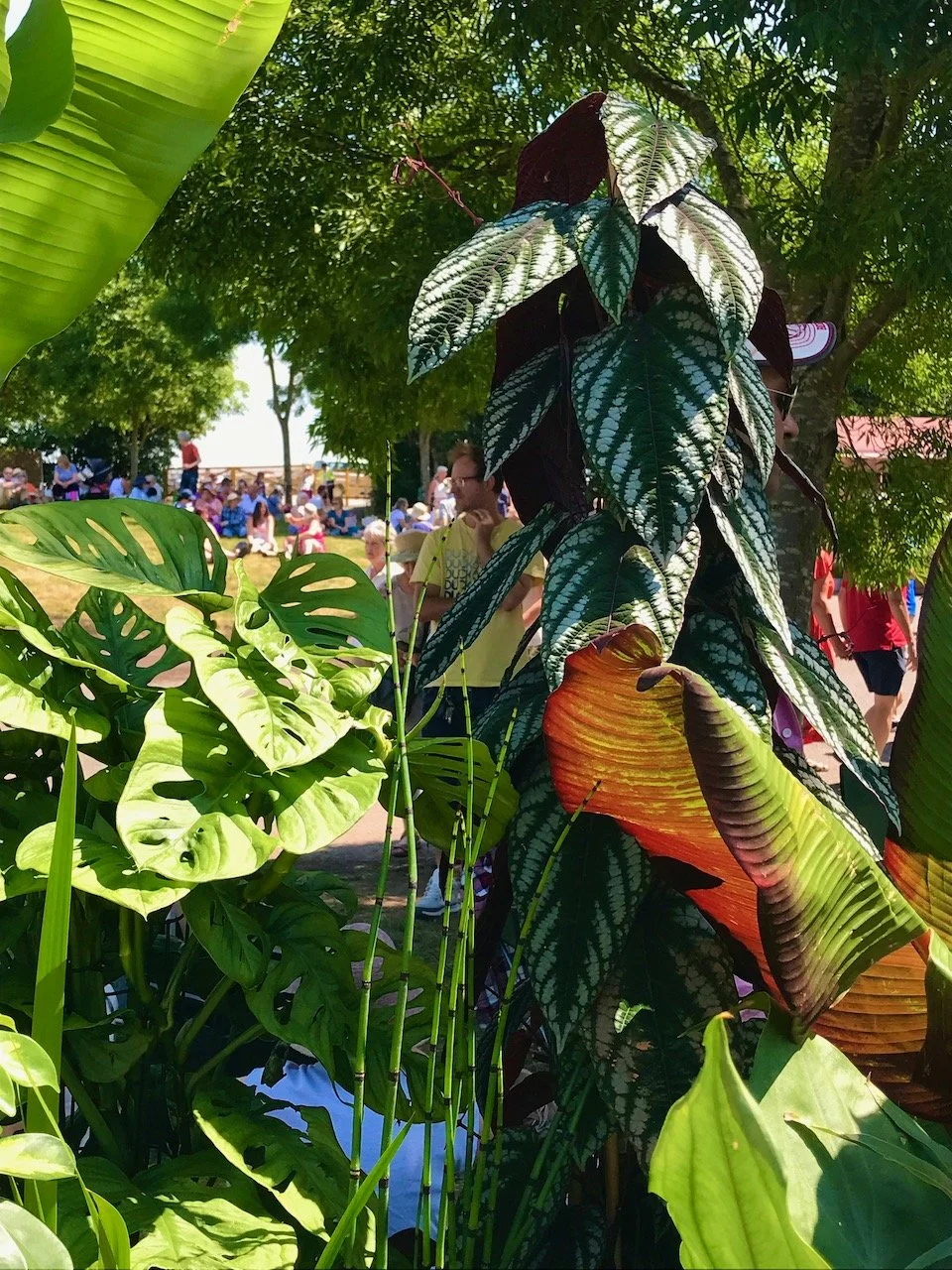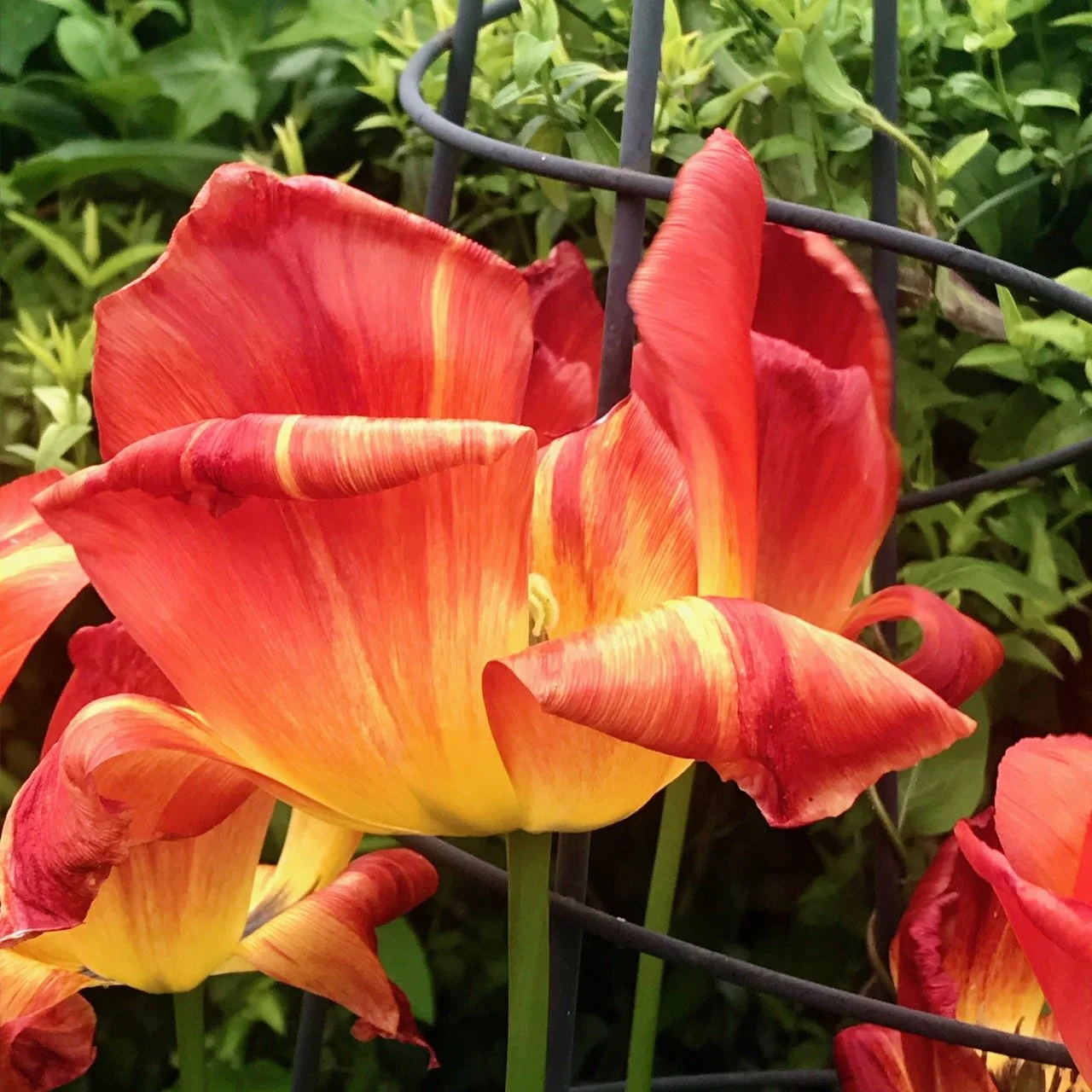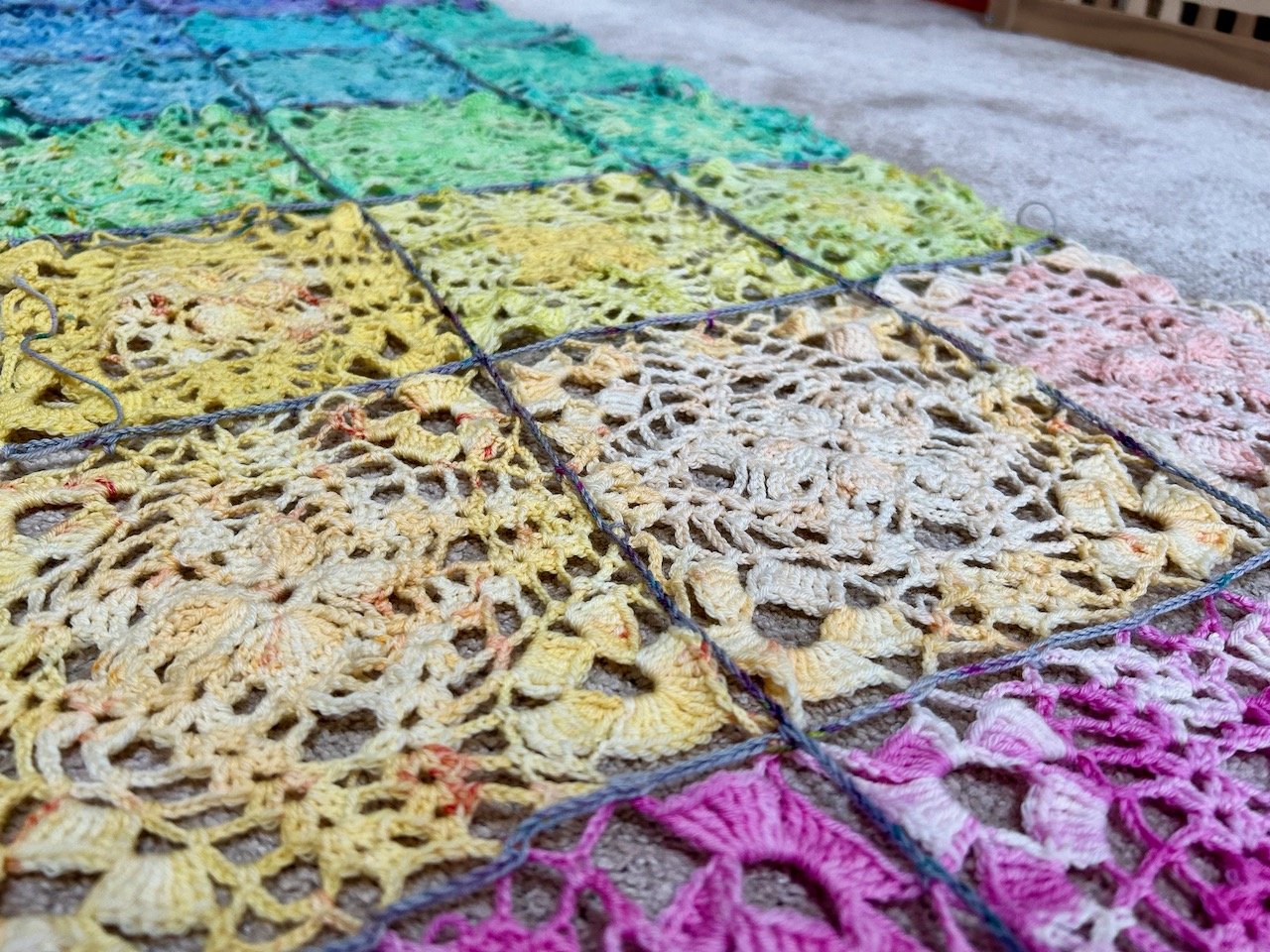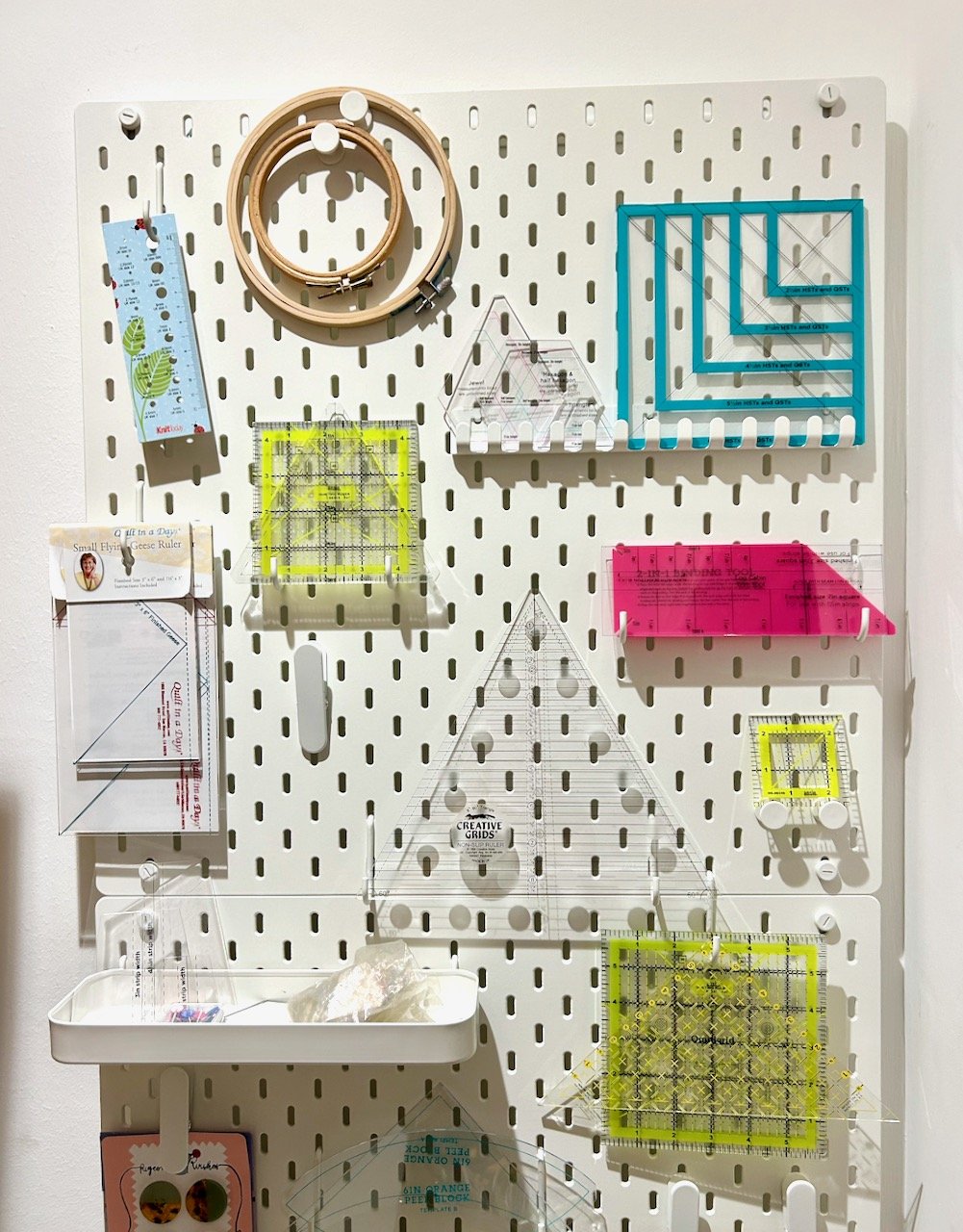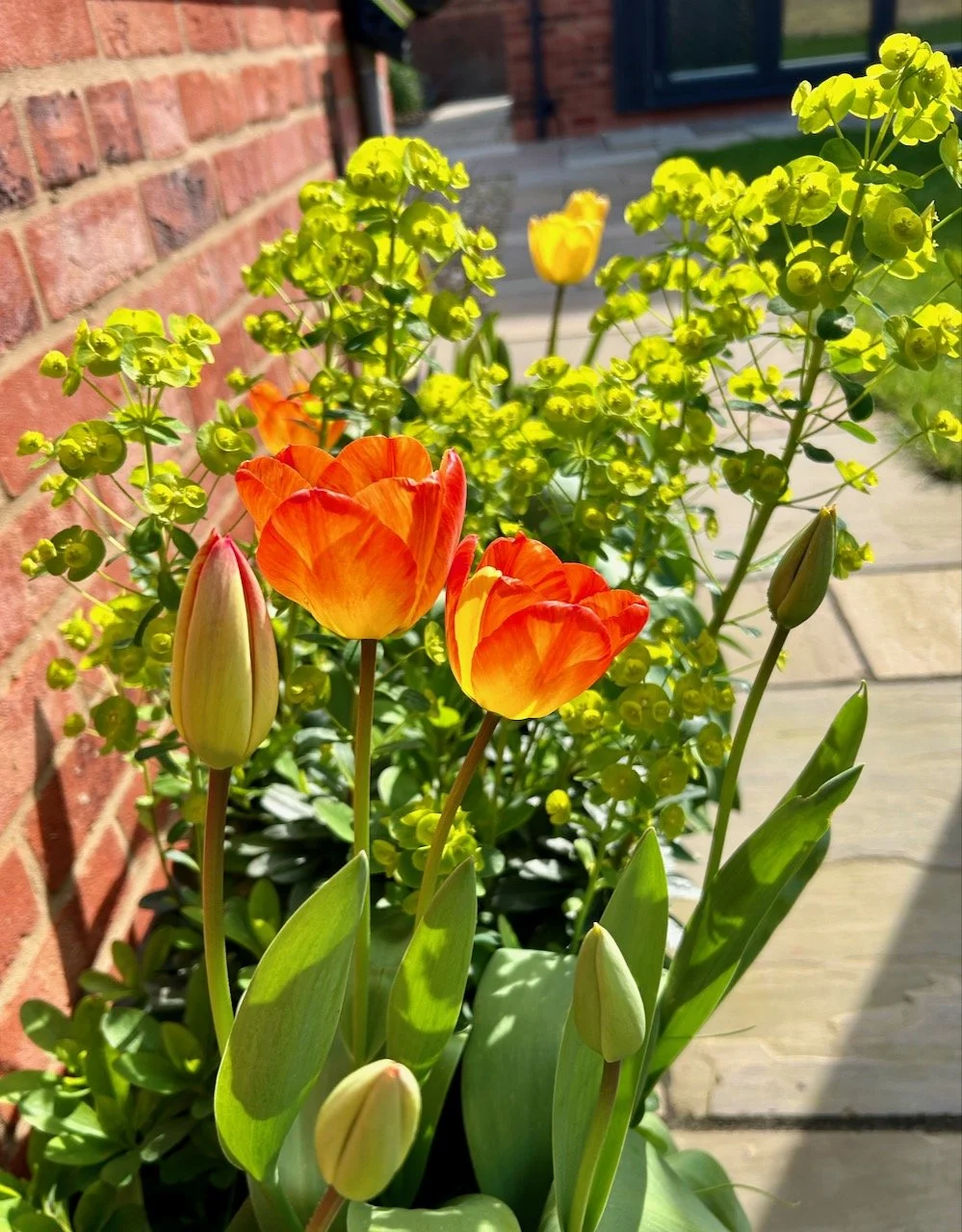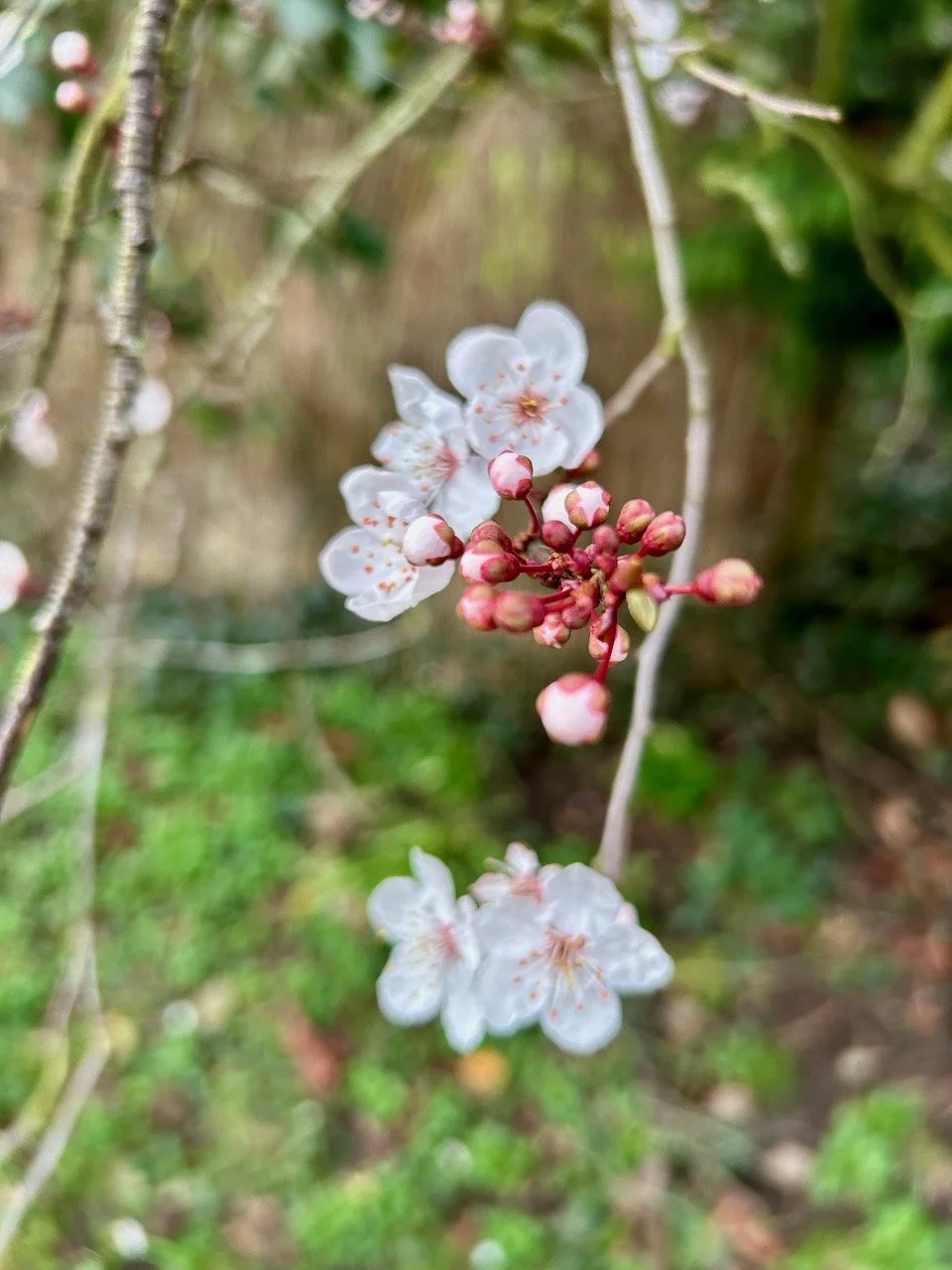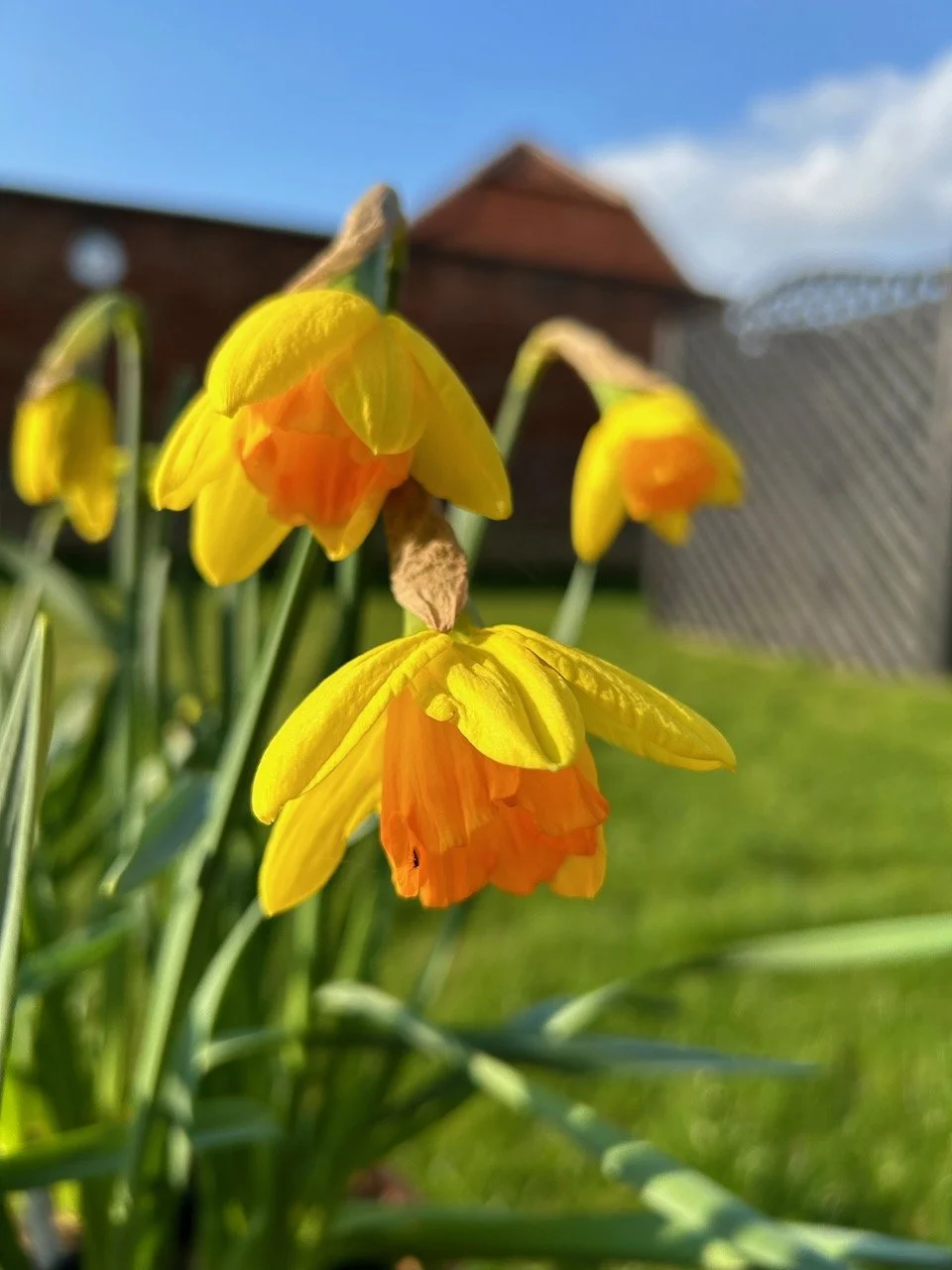Gardening is good for you and can provide your own private sensory experience when you fill your garden with plants that excite the senses. Whether that’s colour, scent, flavours, tactile appeal or just their calming rustling and movement, which are just a few ways we benefit from having plants in our lives.
Plants can create vibrant and stimulating gardens for play and entertaining, using bold shapes and bright colours that stimulate the senses. In complete contrast though plants can also be used to make calming, private and secluded spaces. A tranquil garden that calms the senses can provide the perfect place to sit and relax, and in turn help relieve stress and improve our mental health and wellbeing.
Colour plays a big part in garden design, bold colours like yellow, orange and red are vibrant and uplifting. Colours like blue, mauve, violet and green are more calming, and are good to use for areas designed for rest and relaxation.
Tall, dense boundary hedges and planting can reduce annoying noise from roads and neighbours and create a feeling of shelter and protection. But sound is important too in a sensory garden, perhaps it’s the wind gently rocking and rustling the branches of trees, a robin perched high-up entertaining with its song, bees busily collected pollen, or the calming sound of trickling water.
All gardens though have the power to heal and contribute to a healthier and happier life, and I’m sure that your garden, like mine, also provides exercise as well as a sense of achievement, when it’s finally a little more under control. I mean, a garden’s never really done is it?
Research has highlighted how valuable contact with plants is to our health, both through the beauty and colour, or non-visual stimulation of touch, taste, smell or hearing the natural sounds around us. A multi-sensory garden evokes a direct physiological response both consciously and unconsciously, affecting our mood, relieving stress, evoking memories, relieving boredom, stimulation conversation or just by tapping into the healing power of nature.
Quiet ‘me time’
Silent Space is a project promoting peaceful time in green and tranquil spaces, somewhere to switch off your phone, escape the hustle and bustle of everyday life and let your body and mind wander. Several gardens are supporting this initiative, and there could be a garden close to you.
Plants to excite the senses
Virtually every plant will stimulate one sense or another, so whether you’re looking for something colourful, tactile, fragrant or flavoursome there are plants available to enjoy throughout the year. Be creative by developing displays along paths and around areas where you sit, so you can get up close to the plants you choose.
Sensory plants include:
Tactile plants: plants with soft, hairy or textured leaves, stems or bark such as ornamental grasses, Mahonia ‘Soft Caress’, Santolia, Jerusalem Sage and Lamb’s Ear.
Scented plants: plants with fragrant flowers and foliage such as Lavender, scented leaf Pelargoniums, Catnip and Wormwood.
Swaying and rustling plants, such as tall, graceful ornamental grasses like Miscanthus, Stipa, Pampas grass and Bamboo.
Tasty plants including culinary herbs like sage, thyme, chives, parsley, basil and ornamental angelica, plus fruits from trees and bushes, soft fruits like strawberries, and vegetable crips and delicious salad leaves which grown in your own garden, will have very low airmiles.
